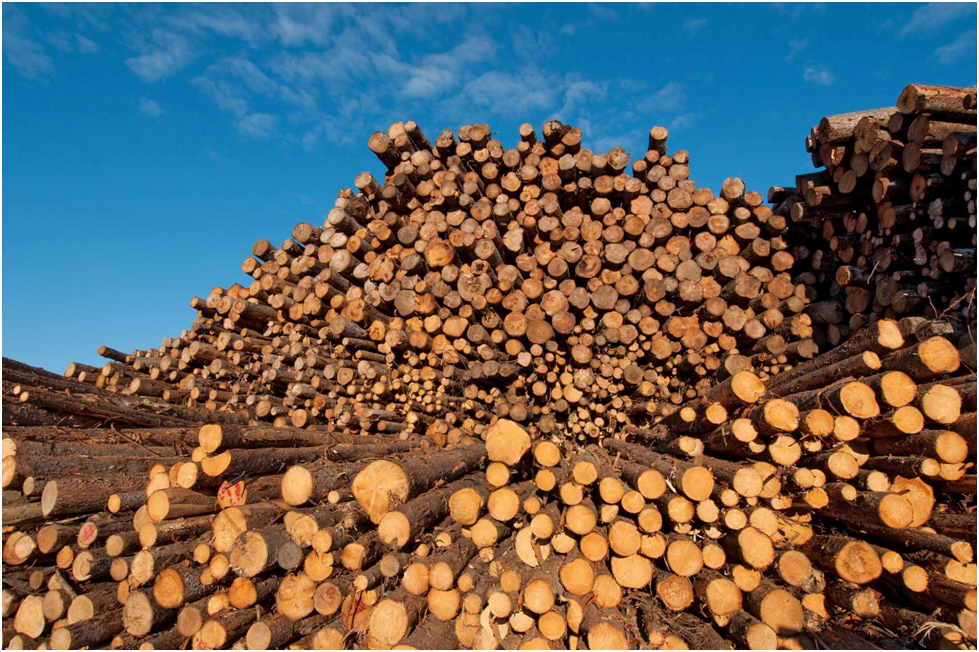HINTS:

Canada’s lumber and wood industries convert logs into various products, from lumber to wood chips. Softwood, derived from coniferous trees, supplies most of the manufacturers in these industries and is cut primarily in British Columbia. The remainder of the industry is supplied by hardwood (from deciduous trees, e.g., birch, maple, oak) found mainly in southern Ontario and Québec and the Maritimes. Though technically not hardwood, Alberta produces large volumes of aspen and poplar.
Lumbering has developed as a large scale organised activity in Canada due to the following factors:
• Raw material:
Canada’s forests are mostly softwood so it’s easy to chop. In coniferous forest, trees of same species are concentrated in one particular area so mass exploitation easier compared to tropical areas.
• Transport:
During winter, the forest surface is covered with snow which has a slippery surface so it is easier to move logs to rivers.
The forests are comparatively less dense than in tropical areas and easy to access.
Areas are also well connected by railroads
• Labour:
The winter season in Canada is long so agricultural activities are limited. Farmers have plenty of leisure time and there is no work in the field during winter. So they migrate to northern (coniferous) forests along with their families so there is easy availability of lumberjacks.
Lumbering is highly mechanized with the help of chainsaws; bulldozers etc so low population-density doesn’t create much problem.
• Market:
These forests are close to economically developed regions, where demand for wood is higher e.g. USA for newsprint paper.
Why lumbering is not developed in tropics?
• In temperate forests trees of same species concentrated in a particular area so easy to exploit on commercial scale. However in tropical forests some tree-species are extremely valuable, but they are scattered.
• Frozen ground helps transporting logs from jungle/hills up to rivers in temperate areas .In tropical areas valuable trees are scattered throughout jungle, there is need for some land transport before logs reach the rivers. But road construction is difficult due to rain, dense vegetation.
• Temperate regions have softwood which is easy to float down the river streams which is not the case in the tropical regions. In Amazon and Zaire Basin, some trees are so heavy; it is difficult to float logs as extraction cost is very high.
• In temperate areas major industrial/urban areas are near market. In tropical areas settlement is sparse; economies are non-industrialized, away from demand areas.
• In temperate areas government assistance is there with replantation programs, Silviculture, strict government regulation on lumbering .In tropical areas there are lax regulations, slash-n-burn type agriculture, jungles are permanently destroyed.
